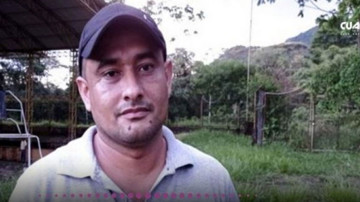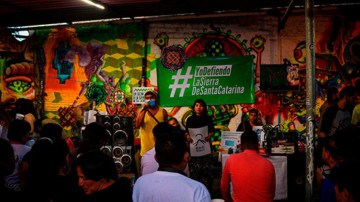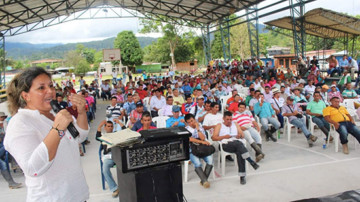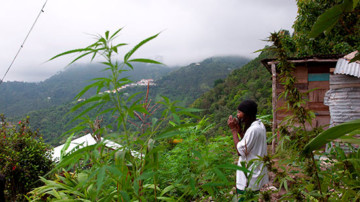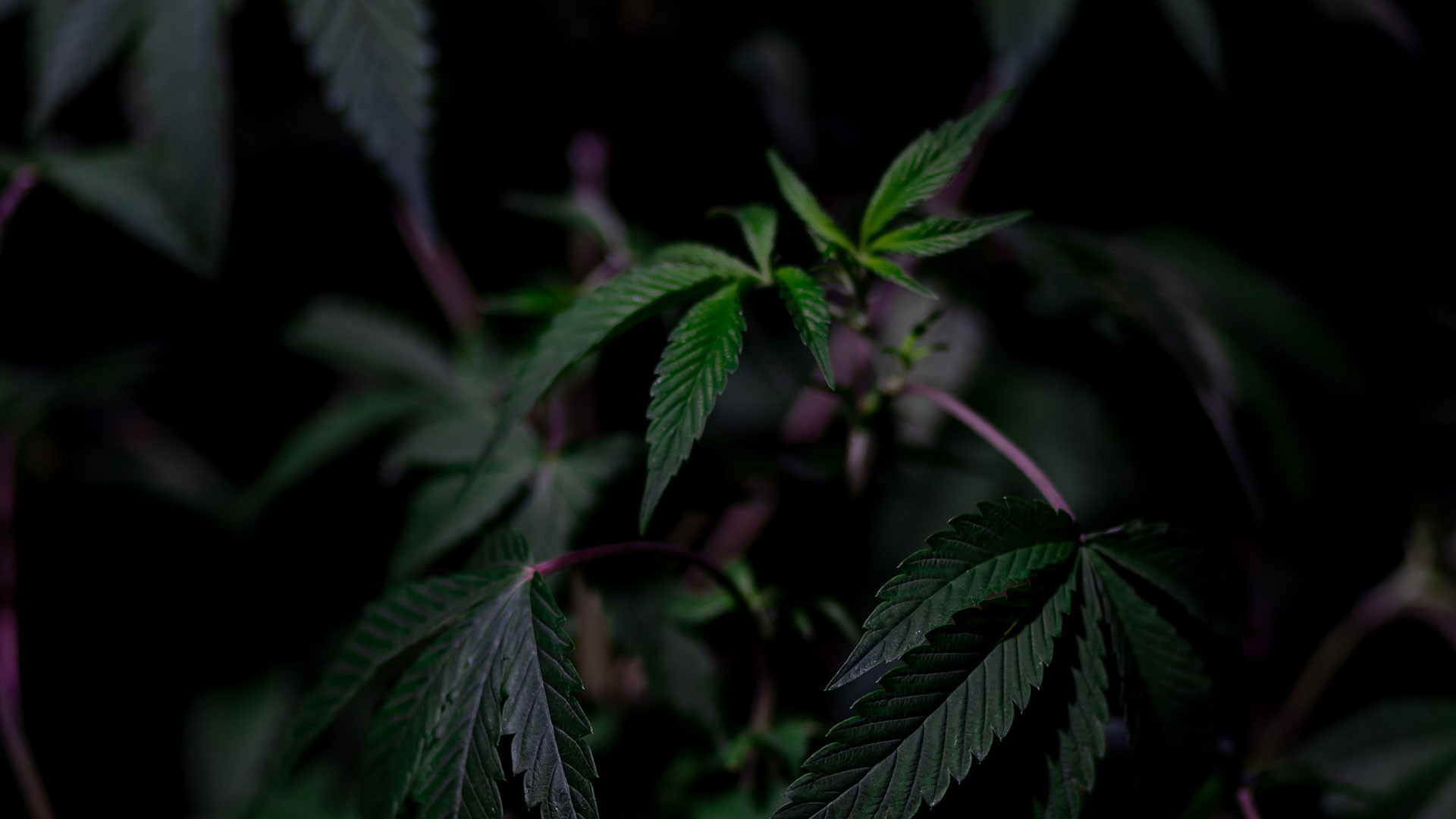
Arturo is a farmer from Guerrero in Mexico. He has been growing cannabis for more than 14 years. He has medicine studies at a public university in Mexico City and uses this plant in his medical interventions because he has done research work that has taught him the uses that can be given to cannabis to treat conditions such as arthritis or rheumatism. He is stabilising seeds and has land where he could employ people from his community when the regulation of the cannabis market reaches its horizons. He has seen how the Armed Forces have disproportionately destroyed crops for many decades to implement a criminalising policy. He is constantly informing himself about the proposals and initiatives that are being discussed around the regulation of cannabis.
R – Hello, Arturo, how are you?
A – All right, what about you, Romina?
R – Also very good.
A – Much pleasure. I am here to serve you.
R – Thank you very much, Arturo. We would like to know first where you were born and where you currently reside.
A – I am originally from the state of Guerrero. I have lived here all my life. I just went to study Veterinary Medicine to Mexico City, and I returned to work in my homeland.
R – How was your first contact with cannabis?
A – In college I met a lot of people who smoked weed. As in Mexico City it was difficult to get it, when I came here to Chilapa it was very easy to obtain it. That’s how I started to use it (…) that’s how I started to get in. We worked under a modular system in the university, each module consisted of three months and we had to do a research project, then there were modules in which we did documentary research about the plant in treatments against arthritis and rheumatism, and that is how I began to be more interested in the subject of cannabis.
R – Your work sounds very interesting; do you currently cultivate?
A – Yes, I am currently dedicated to stabilising seeds. I have stabilised two varieties of seed: one is Widow Haze from Spain, with the crossing of a variety of Guerrero, which here is known as ‘piedra’. It is practically a sativa plant, but with a cross of an indica, it throws about three meters high. By stabilising a Spanish seed with a Mexican sativa plant, obviously the production decreases, and you have to try to stabilise it. I’ve been trying to stabilise it for two years, to achieve the best plants. I consider that genetics conditions the quality of the productions phenotypically: seeing how many branches it has, the length of the main apex, and the number seeds. These are the parameters that I am currently evaluating. I am growing practically in a semi-indoor system, because I do it in pots, 20-liter buckets. These seeds, since they are stabilised, I take them to the Sierra de Guerrero and there they finish adapting. We are already going to start growing this type of seeds abroad to see their production and measure the parameters to have concrete data.
R – At what age did you start planting?
A – I started practically at the age of 20, now I am 34. I’ve been planting and stabilising for 14 years.
A – Have you had any contact with the armed forces or the penal system? Any arrests you have had or witnessed?
A – For my part I have not had any arrests, but since I am a veterinarian and I am working with bees, in the bovine tuberculosis campaign, I have had to witness arrests, but they are not arrests as such. Rather, Army officers arrive, and begin to cut all the cultivation they find, until they burn it. Obviously, as a producer and worker of the land, it makes me very sad to see that so much effort goes up in smoke.
R – What use do you give to your harvest?
A – I mainly have them as a personal consumption, and to extract hashish and oil. I am diabetic, I had a problem with the amputation of a finger, so at the time I learned to work this type of resins and extracts that work to heal. Also, to help with problems that affect bees. Bees have a mite that reduces production, and cannabis reduces the prevalence of mites. Cannabis oil can also be used as a semen preservative to perform artificial insemination in bovines, and that helps us work on better genetics in our livestock. To select the worthwhile strains, I need to know how much they measure, what their production is in grams, the total number of viable seeds, the percentage of germination – these parameters help us to evaluate a strain with certainty.
R – How are the prices in Guerrero? The gram of cannabis and opium gum?
A – In cannabis, we can find prices from $ 80 per kilo to $ 500 – $ 800. The price of gum has varied too much. In 2015 it was oscillating around $ 26,000, which would practically be $ 27 per gram. In these times, with the entry of fentanyl, the price fell to $ 6,000. People who sell the gram for $5-$6 have to invest in fumigation, fertilisation, and labour. Profit is elusive. And then planes pass by and fumigate, destroying all the work. Without good legislation, everything is still in the hands of the black market.
R – Do you think you earn enough to take the risk of illegality?
A – I am particularly stable in the economic aspect. Now I do it out of love. Many producers have been doing it for generations. Their grandparents taught them to cultivate and sow. It is often hard to make them understand the importance of changing the circumstances because this is what they have always known.
R – Do you have any notion of what’s coming up in the (cannabis legal regulation) drafts that have been published?
A – Yes, I am aware of practically everything, of the preliminary draft. That they just deceived us that it was going to take place on 30 April; but then they extended the deadline until December. I also see that this project is aimed at transnational companies dominating the Mexican market.
This is unfortunate because here we have landrace varieties, which are those that were brought to America in the 17th century and well adapted to the region. We have extremely good varieties of high production and cannabinoids. They could compete in an international market.
In terms of the positives, I think the importance of competitive rural cooperatives is clear now. But making them competitive does not need to come from foreign companies. We have the potential for cultivation, the labour, the development and the technology; so why not do it with Mexican companies?
R – Do you have specific requirements to improve the opinion?
A – I have worked in the mountains of Zihuatanejo. Most people who grow cannabis in the mountains of Zihuatanejo live in unfavourable conditions. Some people do not have running water. Draft legislation must 100% include rural communities to promote employment.’
The law must contemplate how to create agroecological systems, or shared cultivation. Here in the area is what we can do: plant cannabis, beans, maguey, coffee, alacate, to take advantage of the land.
In the law they mention that they will deliver amparos against people who have been prosecuted unfairly.
The bureaucratic procedures they put in place to integrate into this area should not be so strict.
If you don’t have a consistent and focused legislation, what is happening in Colombia is going to happen: all the trained labour is working for the narcos.
R – Have you been in a risky situation? Being discovered, for example.
A – Not so far, thank God. I hope I don’t have it.
R – Thank you very much for everything you shared with us.
A – Of course, to order. Any questions or something that I can bring you, I am here to serve you with pleasure.
R – Thank you very much, Arturo. The interview was very useful, it was very clear in all the answers.
Arturo’s story was compiled with support from Instituto RIA and it was edited for clarity.
More stories from Mexico
More stories about Development
